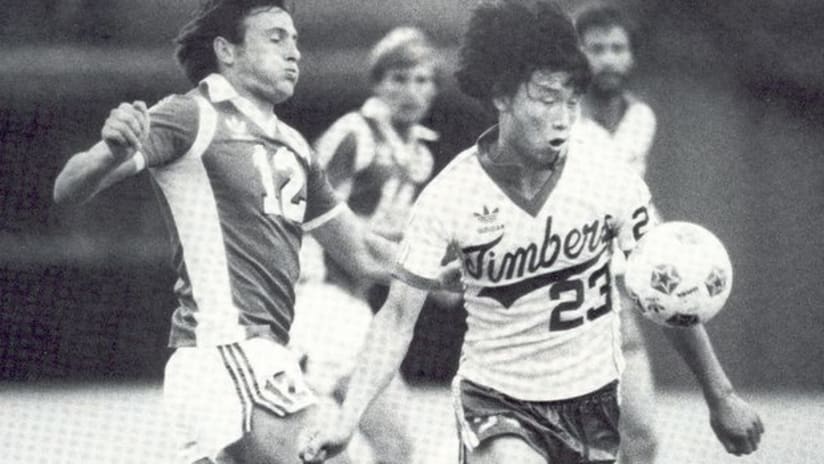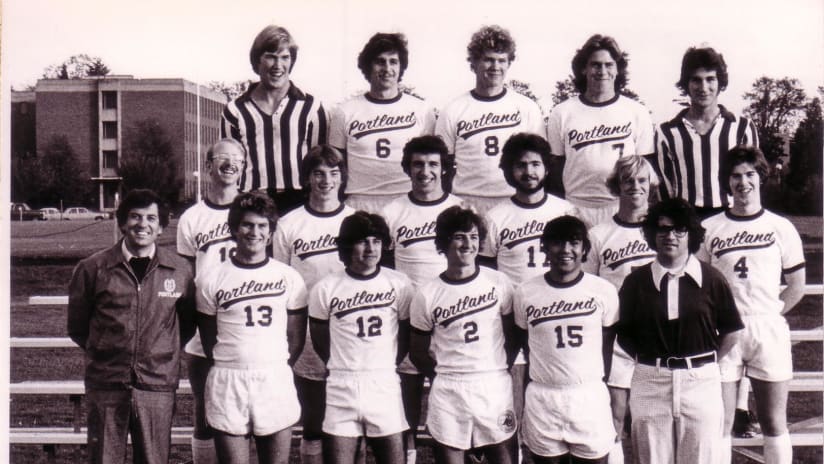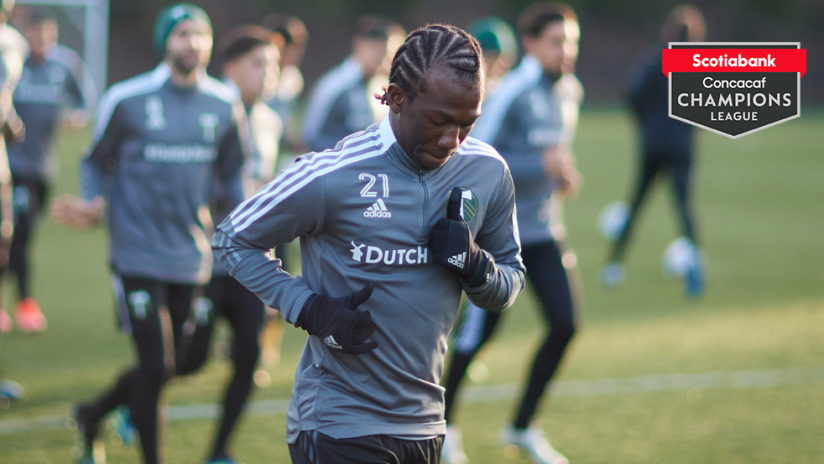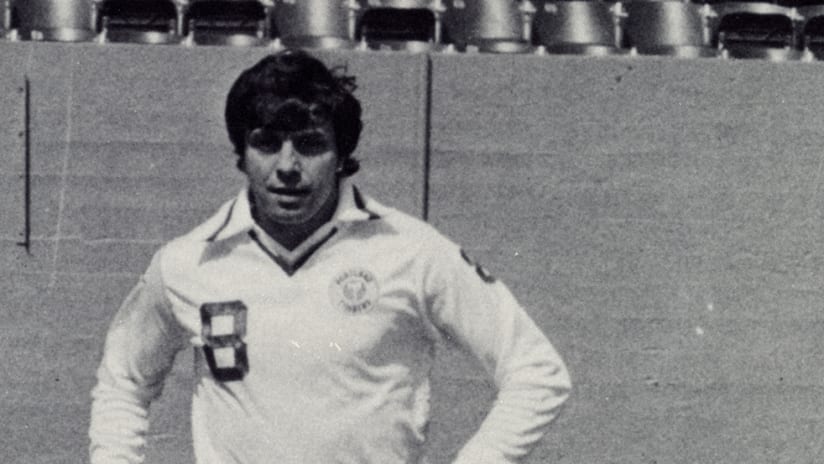Editor’s Note: For the release of the unique Timbers 3rd kits, we reached out to Timbers writer and soccer historian Michael Orr. Orr is the managing writer and editor of FC Media, a contributor to English football journal Blizzard and was the lead curator for this past summer’s Oregon Historical Society exhibit, “Soccer City, USA: The Portland Timbers and the NASL Years, 1975-1981.” A self-described “kit nerd,” Orr takes a look back at Timbers kits from the NASL-era to the present day.
Kits are as important to the game of soccer as any outward expression of the game. In a sport with only the most basic equipment necessary, chosen colors have come to represent clubs, cities and entire nations. Though Portland has its own nickname, the Timbers, the color green is uniquely identifiable with the club in a sport dominated by reds and blues.
The world of soccer kits is one defined by innovation in materials, color schemes and design. Clubs often opt for bold expressions of their historic appearance or try to spin trendy templates into a style all their own. But what of a team’s first season where there is no plan to follow?
In 1975, the Portland Timbers were born with a name selected from a fan vote and a hastily chosen combination of colors. With just two months between their naming and their first game, the club needed uniforms quickly.
“With a front-office staff of just five people, the nickname, team colors, etc. were not debated very long,” remembers Dennis O’Meara, then the team’s 23-year old public relations director.
When the uniforms arrived from Oregon Athletic Supply, a local sporting goods store, the new players were given plain, V-neck adidas shirts with tight, short shorts.
“They were the shortest shorts I’d ever seen,” original Timbers midfielder Chris Dangerfield recalls.
The tops were white with an adidas logo on the right breast and a number on the left. Set perfectly against the clean, all-white, polyester shirt, the forest green numbers were on front and back, as well as the player’s name across the shoulders and the omnipresent three stripes of adidas down the sleeves.
Later in their debut season, Portland acquired green away shirts with numbers and names in gold, as well as white crew neck mesh jerseys, both of which were manufactured by Jelenk, a branch of the local Jantzen sporting goods company. As the Timbers advanced through their most successful regular season of the NASL era, the team rotated between their simple kits, ultimately wearing the mesh version in Soccer Bowl ’75.
In four of their eight outdoor seasons, and both indoor seasons, the Timbers featured adidas uniforms. Portland also became the world’s first soccer club to wear Nike when the local shoe company reached into soccer apparel for the first time in 1979.
Regardless of the manufacturer, the Timbers always stayed true to their original colors, often wearing some of the NASL’s most basic outfits. After the first two seasons, Portland frequently donned collars, sometimes in the era’s brash, wide style and other years with a smaller, understated approach. Though dozens of clubs passed through the NASL, the Timbers were the only club to exclusively wear green and gold.
While Portland may have been unique in sartorial selection, the kits themselves were part of an era featuring synthetic fabrics and uncomfortable textures.
Original Timbers defender and current alumni ambassador Mick Hoban explains, “They were heavy and would irritate your skin. None of them were performance fabrics, so it often felt like we were playing in the showers,” he said.
When the Timbers briefly resurfaced in the Western Soccer League in 1989, the familiar green, white and gold returned to Civic Stadium for two seasons. Changes in uniform technology also saw the early stages of kit performance maximization and appearance.
After a decade in remission, Portland brought outdoor professional soccer back in 2001 with a new manufacturer but familiar look. Clad in Umbro kits, the Timbers wore dark green and white with simple collars reminiscent of their NASL days. The second division era also debuted kit sponsorships for the first time. Previously the Timbers either wore the team’s name across the shirt or were simply given plain jerseys. For one season, in 2003, Umbro provided green and white hooped shirts, moving away from solid-colored kits for the first time in the Timbers’ history.
Beginning in 2004, Portland returned to solid green and white kits, a trend that continued through the Timbers’ time in the second division. Though the template changed nearly every season, Portland was instantly recognizable in simple green and white shirts. While other clubs opted for flair or frequently changed colors, Portland remained committed to providing uniforms that harkened back to their earliest days.
By 2007, just using two kits was not enough and the Timbers joined myriad clubs in introducing third kits. Solid yellow (2007), Oregon pinot (2008) and black (2009-10) uniforms followed, keeping with the team’s monochromatic history while affording variety never before seen in Portland’s pro soccer history.
With Major League Soccer looming in 2011, Portland debuted a new style—a two-tone color split design with white sleeves—compliments of the club’s return to its adidas roots. Though the sartorial departure from the long-time norm was a bold step, the traditional colors and homage to the Rose City were instantly adopted as the look to define Portland’s return to the top flight. Included in the designs were particularly local touches to further associate the kits with the city and support. From a rising sun motif on the back of the home shirt to the entirely unique crest and thorn patterns in the collar and front of the secondary Rose City Red kit, the inaugural MLS uniforms were a first step into a new world of kit design.
Reflecting on the evolution of kit technology into today, Timbers alumni ambassador Hoban continues, “If you look at the Timbers’ jerseys today, the performance fabrics are integrated into the design and they’re built to help on-field perform on the field,” he said.
Back then, “We were just happy to get a jersey on our backs.”
As the club moves into its second MLS season, a revival of historic themes is apt. In 2011 the story was about a first season in the top flight. 2012 will be a reminder of the thirty-six years that set the stage.












